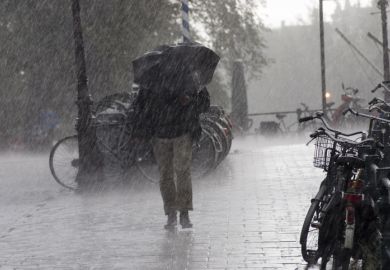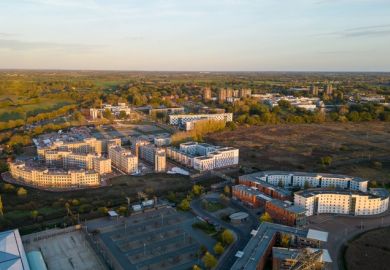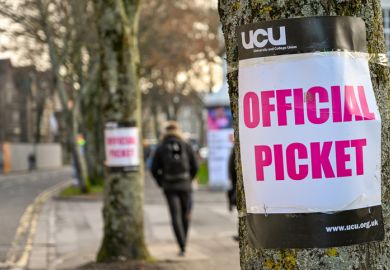The vast majority of post-92 universities in the UK are facing job cuts, with a quarter seeing more than 50 roles at risk while staff who remain potentially face worse terms and conditions, according to a University and College Union (UCU) survey.
Modern institutions appear to be bearing the brunt of the major restructuring schemes going on across the sector, with 86 per cent of the 43 branches participating in the UCU survey reporting that they have faced actual or threatened job losses in the past 12 months, and just five reporting they had not.
A majority of post-92 branches also report cuts to academics’ research time, limits on career progression and lecturing staff being asked to take on more duties including student support and recruitment.
UCU’s bargaining and negotiations official, Jane Thompson, said the union was concerned that the country would end up facing a “two-tier system”, with post-92 universities that only offer narrow curricula, which would disproportionately affect disadvantaged students.
Union branches were polled in March amid reports of widespread job cuts across the sector and suggestions that national agreements, including the post-92 contract on the terms and conditions lecturers should expect while working in these universities, were being undermined.
The results of the survey have fed into a national organising meeting of post-92 union branches. It also finds:
- Fifteen branches reporting 20 or fewer jobs at risk, 10 reporting between 20 and 50 and 12 reporting more than 50.
- The most common reasons cited for job cuts are falling UK student numbers, falling international student numbers, restructuring and the financial stability of the institution.
- The arts and humanities were worst affected but cuts were reported across all subject areas, including STEM and teacher and health education.
Ms Thompson said redundancies were also affecting professional services staff, which was adding to the workload of lecturers who were having to do more non-academic work.
Although she recognised funding issues connected to a rise in contributions for the Teachers’ Pensions Scheme and falling international revenue, Ms Thompson said the sector was seeing a “knee jerk reaction to financial pressures” with job and course cuts being seen as the “first port of call”.
She added: “Ultimately it is the management of those institutions that is to blame if they have invested in new buildings, creating subsidiaries in London and other places."
Seventy per cent of branches report that lecturers had experienced a cut in their research time while 25 per cent say their employer no longer adheres to the 550-hour annual limit on teaching; and this rises to 45 per cent who say the 18-hour cap on weekly teaching is no longer in place – breaching the post-92 contract.
Ms Thompson said such agreements and the national pay framework help make academia an attractive profession and “maintain the essence” of what it is to be a higher education institution and the union has called for them to be protected as part of its national pay claim this year.
Raj Jethwa, chief executive of the Universities and Colleges Employers Association, said: “The post-92 contract was implemented by higher education institutions following an agreement reached in 1990. But as you would expect in any sector, things have not remained static over the last three decades.
"Many of these local contracts have been varied, as permitted by the national agreement, and few HEIs operate the original 1990 model contract in its entirety. This is completely reasonable as HEIs seek to adjust their operating and workforce models to meet the continual pressures and challenges facing the sector.”
Register to continue
Why register?
- Registration is free and only takes a moment
- Once registered, you can read 3 articles a month
- Sign up for our newsletter
Subscribe
Or subscribe for unlimited access to:
- Unlimited access to news, views, insights & reviews
- Digital editions
- Digital access to THE’s university and college rankings analysis
Already registered or a current subscriber?








